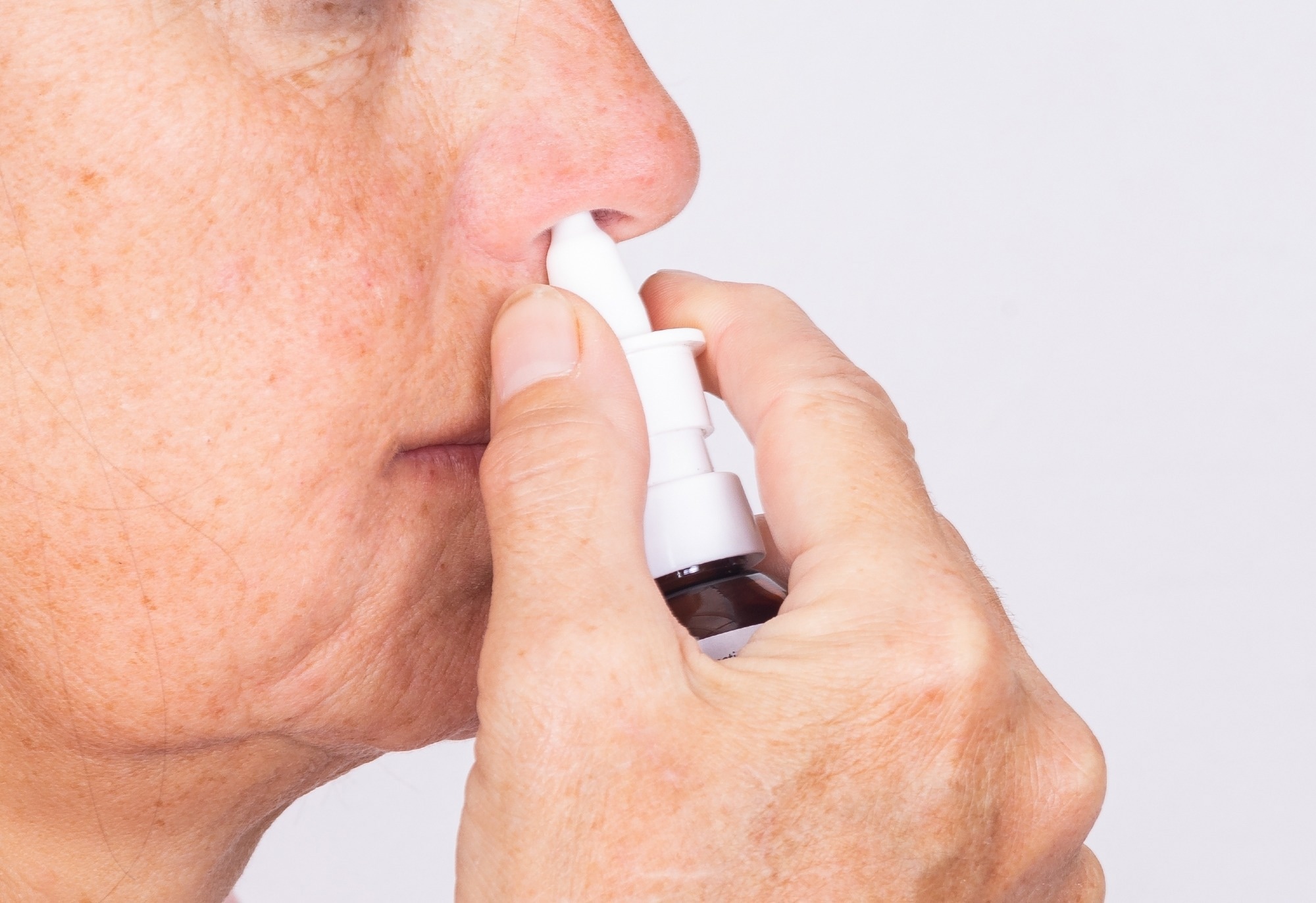The COVID-19 pandemic has presented a challenge to people in terms of both treatment and prevention. Scientists were unable to provide prompt therapy or protection against severe acute respiratory syndrome coronavirus 2 (SARS-CoV-2) infections despite advances in the medical field. A number of medications, including antivirals, were administered to patients to lower mortality and morbidity rates.
 Review: Treatment of respiratory viral infections through inhalation therapeutics: Challenges and opportunities. Image Credit: Jan Schneckenhaus / Shutterstock
Review: Treatment of respiratory viral infections through inhalation therapeutics: Challenges and opportunities. Image Credit: Jan Schneckenhaus / Shutterstock
Challenges for respiratory infection treatment
Scientists face several challenges in developing antivirals that kill viruses without causing harm to hosts. In the present study, researchers reviewed inhalable antiviral formulations against SARS-CoV-2 and significant clinical study outcomes.
Worldwide, viruses cause numerous deaths and life-threatening diseases, but there are very few antivirals available for treatment. In contrast to bacterial infections, viral pathogens need the host protein to operate and live inside the host cells, making them challenging targets for antivirals. Ensuring that the drug does not harm the hosts while acting against viruses is the main difficulty facing antivirals. Antiviral drug resistance is another factor in which pathogens make minute adjustments to their deoxyribonucleic acid (DNA) and proteins, thus rendering them resistant to the medication.
Inhaled antiviral agents
Ribavirin
Ribavirin, a purine nucleoside analog developed synthetically, has antiviral properties. It is now utilized to treat viral hemorrhagic fevers, hepatitis C virus, and respiratory syncytial virus (RSV) in high-risk newborns because of its broad spectrum of activity against DNA and ribonucleic acid (RNA) viruses in vitro and in vivo. Ribavirin has demonstrated ineffectiveness against naturally occurring influenza infections in people when administered systemically. This might result from the liver's quick metabolism of ribavirin, which concentrates in erythrocytes. Aerosol delivery of the drug effectively combated these issues. In contrast to oral ribavirin, which results in hemolytic anemia, ribavirin administered as an aerosol is efficient and safe in newborns and adults.
Oseltamivir phosphate
An oral neuraminidase inhibitor called oseltamivir phosphate is used to treat influenza A and B and prevent the flu after exposure. Oseltamivir phosphate (OP) oral therapy is linked to gastrointestinal issues such as nausea, vomiting, and diarrhea and adverse effects on the central nervous system like vertigo, exhaustion, headache, dizziness, and sleeplessness. Post-marketing surveillance has been linked to thrombocytopenia, hepatic issues, and skin rashes.
The safety of OP-DPI on lung cells was demonstrated by the MTT (3-(4,5-dimethylthiazol-2-yl2,5-diphenyltetrazolium bromide) assay that employed Calu-3 cells originating from bronchial cancer. Due to this discovery, inhalation OP treatment was found to be more efficient and practical than oral OP treatment. However, the poor advantage of OP nebulization is confirmed by the fact that only 2% of OP prodrugs are pre-systematically transformed into the active form.
Zanamivir
A transition state analog of N-acetylneuraminic acid (sialic acid) called zanamivir prevents influenza virus neuraminidase from functioning, interfering with the de-aggregation and release of viral progeny and interrupting the viral replication cycle. Because zanamivir has a low oral bioavailability of less than 5%, intranasal and dry powder inhalation delivery is a suitable and efficient method.
It is authorized for use as an aerosol inhalation in treating influenza A and B infection in adults and pediatric patients older than seven years old who have had no more than two days of symptoms. For prophylaxis purposes, it is also allowed for use in adults and pediatric patients older than five years old.
Laninamivir
A neuraminidase inhibitor called laninamivir octanoate (CS-8958) is used to treat and prevent influenza A and B viruses. It is administered as a once-daily dose of 40 mg for adults and 20 mg for children younger than 10 in the form of dry powder inhalation. The 50% inhibitory concentration (IC50) of laninamivir against the majority of influenza neuraminidases is higher than the active form of laninamivir that is retained in the airways. Only 15% of the medication is absorbed systemically after inhalation. Laninamivir, along with its prodrug, laninamivir octanoate, has demonstrated strong inhibitory effects against various influenza viruses, including seasonal H1N1, pandemic H1N1, H3N2, and influenza viruses.
Interferon (IFN)
Glycoproteins called interferons are members of the cytokine family and are created and released by various cells in response to an inflammatory response to a viral infection. It is used to prevent viral infections, particularly viral infections of the respiratory system, such as rhinovirus, influenza A and B, parainfluenza, adenovirus, and coronavirus, due to its broad antiviral efficacy. The use of 500 g of aerosolized recombinant interferon-gamma (rIFN-) over the course of 12 days has been found to be safe and well tolerated. Additionally, inhaled rIFN- can be well tolerated even at greater dosages in contrast to the subcutaneous method, which results in adverse side effects.
Overall, the study findings provided information on antiviral medications that can be administered as aerosols. The development of inhalable dosage forms has been studied in many ways. However, very few preclinical and clinical research have been carried out. This is concerning because there is a lack of data on the safety or efficacy available of inhalable antivirals.